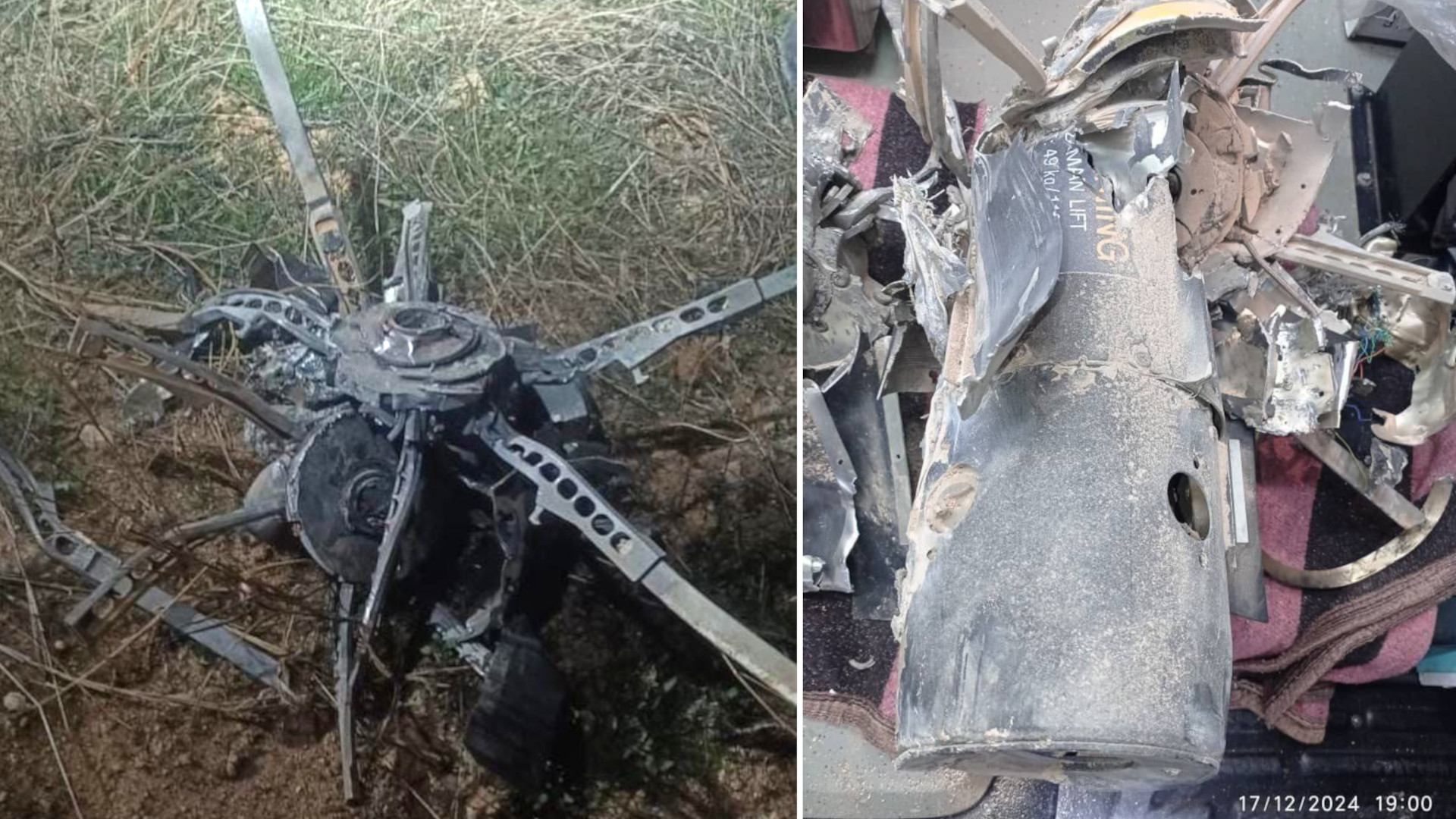A new targeted strike involving the use of the secretive AGM-114R9X Hellfire missile looks to have occurred in northwestern Syria. The R9X variant features an array of six pop-out sword-like blades rather than a traditional high-explosive warhead. This comes amid a flurry of foreign strikes, including U.S. military ones targeting ISIS, across the Middle Eastern country where the airspace is now permissive following the fall of long-time dictator Bashar Al Assad. American officials have been open about their fears that terrorist groups could exploit the current situation.
Unconfirmed reports say that three missiles in total were fired at a vehicle in Syria’s Idlib region near the border with Turkey. Who may have been inside the vehicle and who the intended target or targets may have been remain unknown. Pictures now circulating online do show what looks to be the blade arrays from at least two AGM-114R9Xs, as well as other distinctly Hellfire debris.
What the images show is fully in line with what has been observed following R9X strikes in the past. This version of the Hellfire was developed explicitly to prosecute targeted strikes while minimizing the risk of collateral damage to an extreme degree.
The bladed version of the Hellfire, also nicknamed the “ninja bomb” and “the flying Ginsu,” has also been employed in multiple targeted strikes against vehicles in northwestern Syria in the past. MQ-9 Reaper drones tied to the Joint Special Operations Command (JSOC) and Central Intelligence Agency (CIA) are also understood to be the launch platform of choice. In fact, the first known instance of the R9X’s use was in a 2017 strike that killed Al Qaeda’s then-number two leader, Abu Khayr Al Masri, as he traveled by car in Idlib. The War Zone was the first to call attention to the clear use of a mysterious new munition in that case.
The War Zone has reached out to the U.S. military and the White House’s National Security Council about the apparent strike in Idlib.
As noted, American authorities have made no secret of their concerns about the chaotic situation in Syria following the downfall of Assad, as well as the drawdown of Russian forces in the country, providing new space for terrorists to regroup. American forces have launched dozens of strikes targeting ISIS in the past week or so. As The War Zone has highlighted in the past, the collapse of the Syrian military, as well as the ongoing pullback of Russian forces, has substantially reduced risks to U.S. and other foreign aircraft operating over the country. Strikes in the western half of Syria, in particular, had previously been carried out only by drones and through the use of stand-off munitions.
“U.S. Central Command (CENTCOM) forces conducted precision airstrikes targeting known ISIS camps and operatives in Syria, Dec. 16, killing 12 ISIS terrorists,” CENTCOM said in a statement just yesterday. “The strikes against the ISIS leaders, operatives, and camps were conducted as part of the ongoing mission to disrupt, degrade, and defeat ISIS, preventing the terrorist group from conducting external operations and to ensure that ISIS does not seek opportunities to reconstitute in central Syria. These recent strikes are in former Regime and Russian controlled areas ensuring pressure is maintained on ISIS.”
In terms of ISIS, its presence in northwestern Syria has historically been limited, though that is the part of the country where the group’s founder Abu Bakr Al Baghdadi was killed in the course of a U.S. raid on his compound in 2019. The United States has also launched targeted strikes against members of other groups, including Hurras al-Din (Al Qaeda’s current Syrian franchise) and Hay’at Tahrir al-Sham (HTS), in that corner of the country in the past.

HTS, which claimed to have broken from Al Qaeda in 2016, was at the forefront of the ouster of Assad and is now leading the effort to create a new government in Damascus. The U.S. government has confirmed it has been in contact with HTS since the fall of the Assad regime, despite it, along with others, still officially designating the group as terrorists.
The apparent R9X strike also underscores the ongoing fluidity of the situation throughout Syria and the sheer number of actors, internal and external, who remain very actively involved. Israeli and Turkish forces have been carrying out their own strikes across the country in pursuit of their own national security aims. Israel has been focused on preventing former Assad regime military assets from being used by other groups, while Turkey has been targeting Kurdish groups in the north, including U.S.-backed forces. Those countries have also been taking advantage of the newly permissive airspace above Syria.
U.S. strikes in Syria, whether they involve R9Xs or not, as well as those by other foreign powers, only look set to continue amid the ongoing power vacuum in the country.
Contact the author: joe@twz.com
